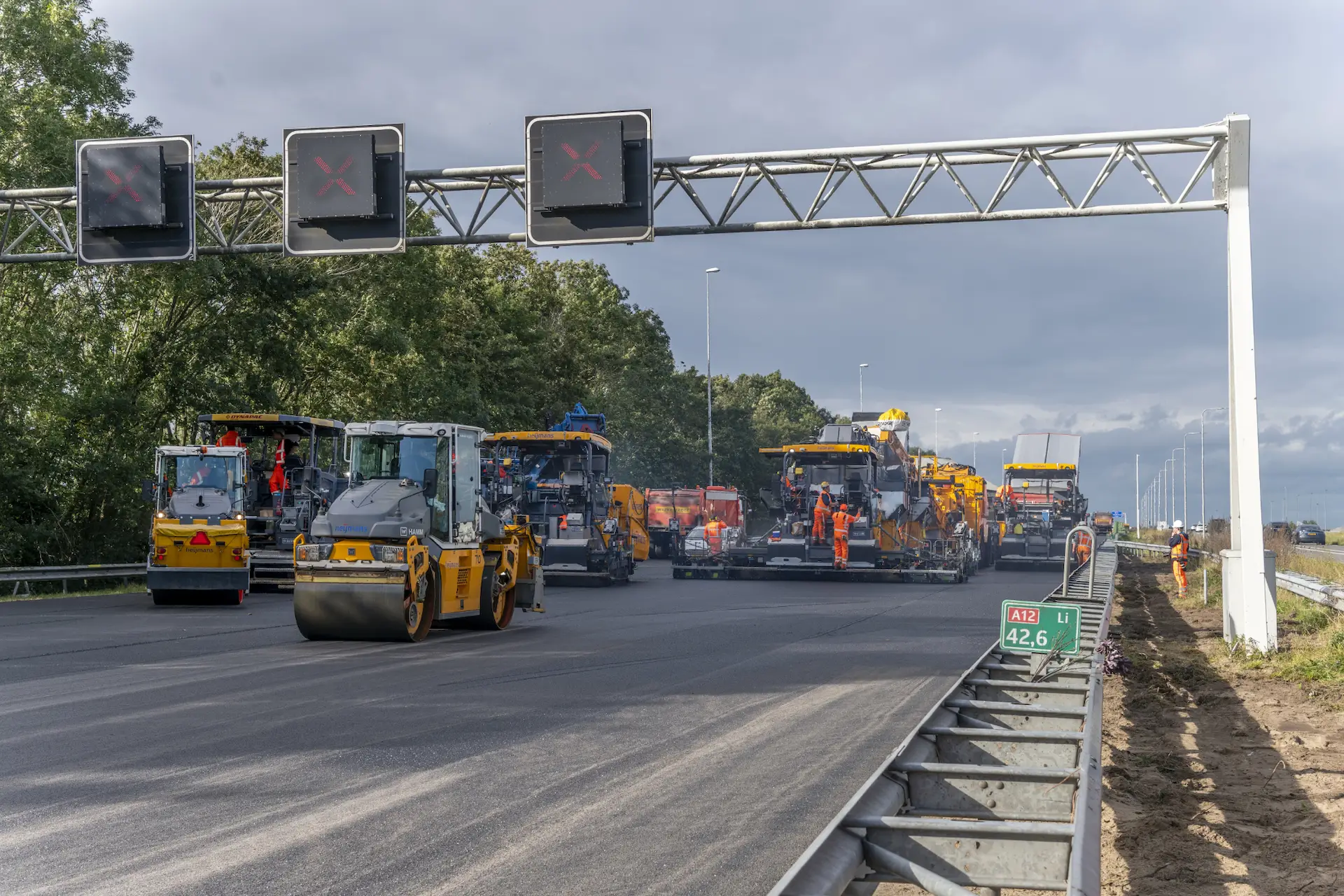A2 and A12 get special, extra quiet asphalt layer
Climate Goals
Both the A2 and A12 are major arterial roads in the middle of the country. So the roads must remain in top condition. Rijkswaterstaat is switching to sustainable road surfacing as much as possible in order to meet climate goals. Heijmans met all the needs. The contract has a value of some 20 million euros.
It should be ready by the end of 2024
Preparatory work will begin in 2023. Starting in the spring of 2024, the asphalt will be replaced with noise-reducing asphalt, and repair work will take place on a number of bridges and overpasses. The work is scheduled to be completed by the end of 2024.
Noise reducing layer
The noise-reducing layer logically results in less traffic noise, something that local residents in particular are happy about. The asphalt features a so-called DGD layer, better known as Thin Noise Reducing Coatings. Facilities such as noise barriers and façade insulation are thus unnecessary. The material provides noise reduction of 3 to 4 dB, depending on the type of asphalt. In the future, even 8 to 10 dB of noise reduction should be possible. Circular asphalt is being used for the A2 and A12, with up to 70% recycled asphalt in the intermediate layer and up to 60% recycled asphalt in the overlays.
Covering asphalt
The top layer of asphalt in most cases consists of mastic (bitumen, sand and dust) and stones. These are also completely separable after completion so that they can also be reused in the future to make new coatings.
Road noise
“The amount of traffic noise on a noisy concrete road is three to six times more than on a quiet asphalt road, in decibels it is 4 to 8 dB difference. This applies to passenger cars, but trucks also make two to four times less noise on a quiet asphalt road, corresponding to 3 to 6 dB. In many cases, the noise reduction effect increases with speed. The type of road surface mainly dampens rolling noise, but engine noise, which reflects from under the bodywork against the road surface, is also quieter due to a porous road surface,” writes the Ministry of Infrastructure and the Environment in the report ‘Road surfaces against traffic noise’.
Reduce tire noise by quiet road surface
But then how does a quiet road surface reduce tire noise? The Ministry of Infrastructure and Environment explains: “The tread of a tire vibrates as it rolls over the rough road surface creating a sound wave. Together with the road, the tire tread forms a horn that amplifies the sound another ten to one hundred times. Air also hisses between the treads and from under the tread blocks. The deformation and sliding of the tread blocks over the road surface creates a characteristic “stick-slip” sound. A quiet road surface acts on all these things.”
One can think of such things as a finer roughness that reduces the repulsion of the tire, but an absorbent road surface also suppresses amplification in the horn. Finally, an open material reduces air compression and hissing.
Did you know.
Ministry of Infrastructure and Environment: “Of course, the amount of engine noise does not depend on the type of road surface, but due to the closed bodywork, practically all engine noise enters the environment via reflection against the road surface. The absorbent road surface suppresses this reflection.”
Various types
What types of quiet road surfaces are there? You can think of SMA (Stone Mastic Asphalt), of DGD (Thin Noise Reducing Layer) and single and two-layer ZOAB (very open asphalt concrete).
Source header photo: Rijkswaterstaat News

